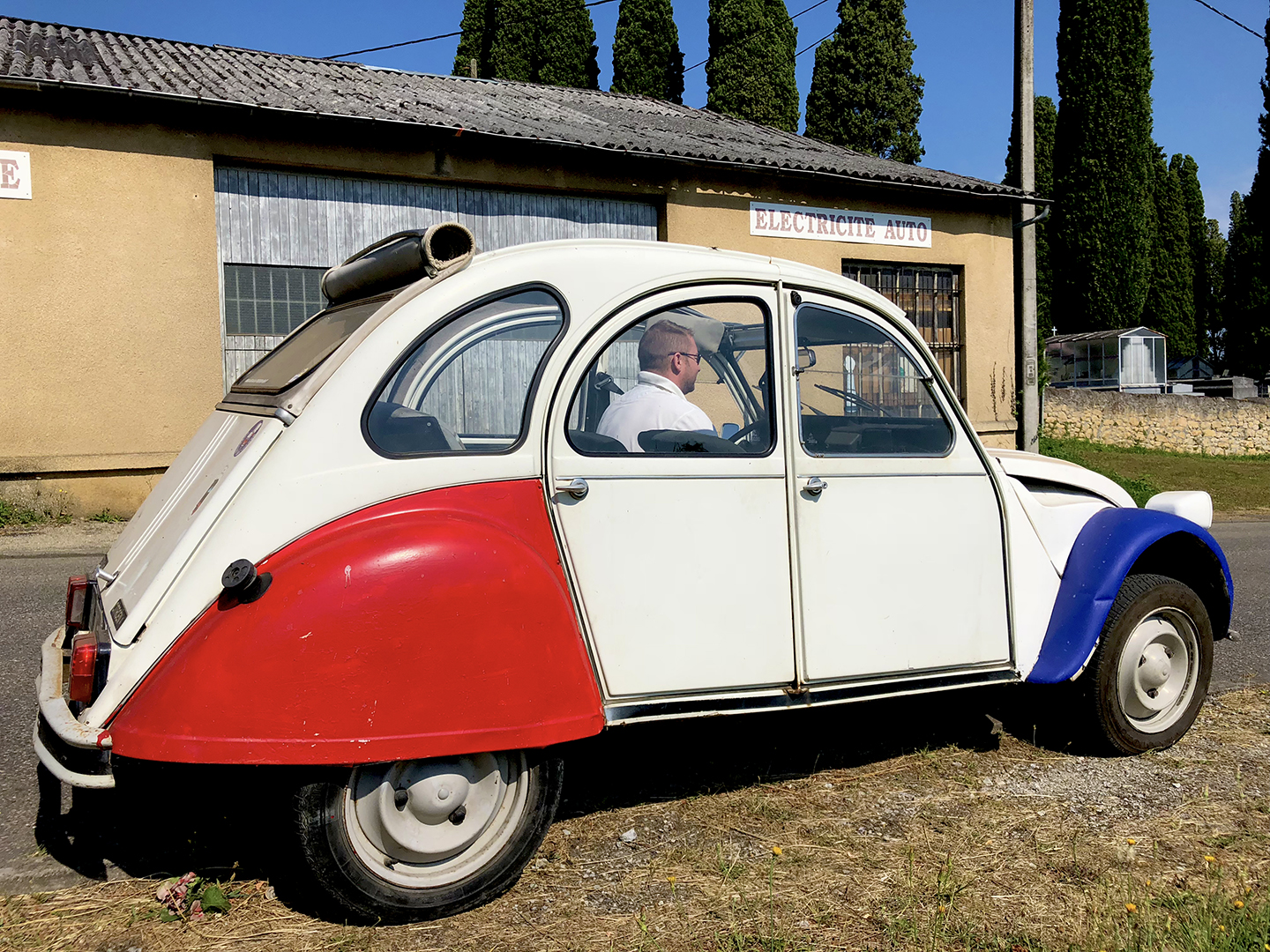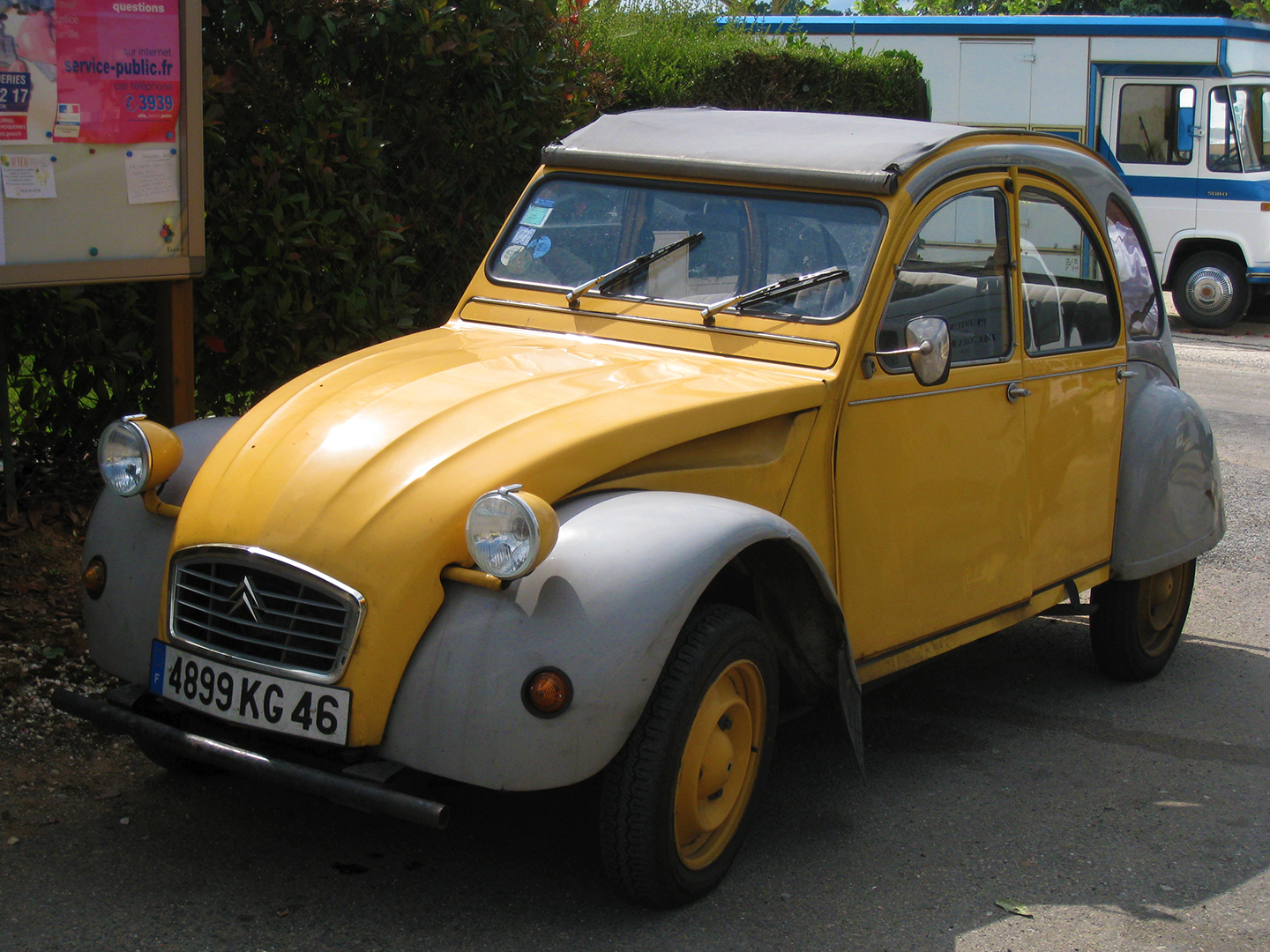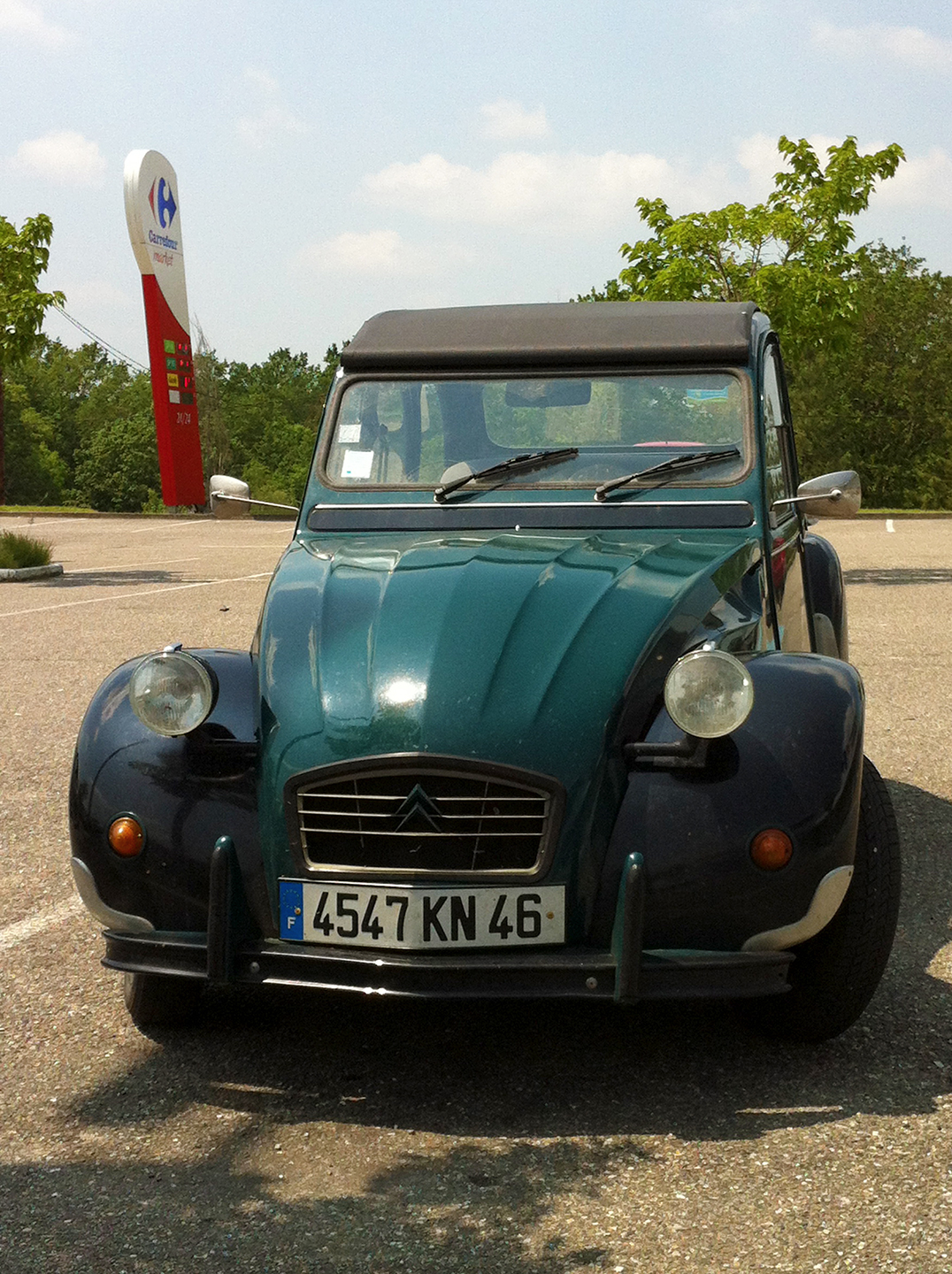Modesto –the California city where I lived before moving back to France three months ago– is the epitome of car culture in the USA. Native son George Lucas immortalized Friday night cruising in his 1973 movie American Graffiti. If you recall, a famous French car is featured in the film: a young Richard Dreyfuss steps out of an old Citroën 2 CV.
A patriotic specimen. Check out the roll-back roof.
I doubt I’m the only one who had a love affair with this iconic car. It was Dad’s first car when my parents ditched their Vespa and bought their Deux Chevaux about the time I was born. Truth be told: this car left an indelible imprint on three generations of French people.
Clearly, the perfect choice for a wedding: note the tulle flower at the top of the antenna.
The concept and design originated in 1938 but production in earnest only started ten years later; the car would be produced until 1990. In order to appeal to the masses (and sell more tires since Michelin had just bought Citroën…) engineers were charged to develop a Toute Petite Voiture that would sit four passengers, reach a top speed of 60 km/h (about 37 miles per hour) and burn only 3 liters of gas to cover 100 km (equivalent to 78 miles per gallon.) The cahier des charges for the suspension specified that a basket of eggs transported through a plowed field would not turn into a messy omelet. We must salute marketing genius when we see it: the car has always been extremely popular in rural areas.
I saw this one at a vide-grenier; not for sale, though.
Indeed, you will not see many 2 CV on the streets of Paris nowadays: since 2016, vehicles manufactured before 1997 have been deemed very polluants and City Hall has banned their use within the city limits unless they are registered as voitures de collection or are used for sightseeing tours, a very popular activity in the capital. But in my (current) neck of the woods, I still encounter 2 CV on a daily basis. On a bright February day ten years ago, I even saw a truffle-hunting pig stepping out of the back of a 2 CV camionnette!
There is a spiffy Charleston model in the light grey/dark grey combination that’s often parked across from the lycée. Other color combinations for the Charleston included the classic black/Delage red (it looks maroon) and a rare yellow/black model.
The car is immediately recognizable because the overall design was barely modified through its four decades of production: same rounded shape, flip-up windows, and roll-back roof. One noticeable change: the original butterfly doors were eventually replaced with a less “suicidal” set up… And the engine eventually reached a whopping 602 ccs versus 375 ccs on the very first model. A little more than 5 million units were produced worldwide. The 2 CV is so well loved that car clubs were founded in its honor: of course, they organize car shows and help owners find parts.
Over the years, I’ve noticed a one-of-a-kind 2 CV often parked at Carrefour or Intermarché. The car is mostly dark green but has gone through several paint “upgrades:” on a photo I took in 2014, the front fender on the passenger side was cream instead of black.
Many old 2 CV end up being “personalized.” Sometimes the farmer just wants to replace a rusted fender on its utilitarian vehicle. Sometimes an aficionado yearns to make his car unique through customized paint jobs or accessories.
A bright green 2 CV sits on my neighbor’s property, less than 300 feet from my office. It would need a lot of TLC to hit the asphalt!
A well-traveled 2 CV. I wonder whether it actually visited all the countries featured on its flags.
Customized hood ornament. Perfect!
Michel Robillart, a professional woodworker, made the news last year with his wooden 2 CV. Photo credit: Guillaume Souvant/AFP.
If you’re truly a fan, like Michel Robillard, you spend 6 years of your life building a 2 CV out of various fruit woods. And it runs!
Old 2 CV never die!
Some fun links to explore:
The Citroën Official Website features lots of photos and even sounds of the beloved 2 CV
This INA short film shows how the 2 CV is the perfect vehicle to take on a picnic
If you are a Netflix subscriber, check out this episode (C4:E4) of Comedians in Cars having Coffee where Jerry Seinfeld and Gad Elmaleh drive a vintage 2 CV in the streets of New York.
Vocabulary
La Deuche (or Deudeuche): nickname for the 2 CV
Deux Chevaux: lit. Two Horses; what the initials 2 CV stand for, in reference to the (fiscal) two horsepower engine
Toute Petite Voiture: Very Little Car
Le cahier des charges: lit. notebook of responsibilities; specifications
Polluant: polluting
Voiture de collection: collector’s car, vintage car
Camionnette: van; in this case, the back seat of the 2 CV was removed to increase cargo capacity.
Le lycée: high school











